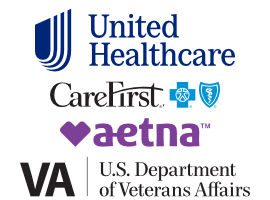For those you suffering from acute or chronic neck pain, you understand why someone coined the expression “a pain in the neck.” Neck pain is also one of the most common areas of physical pain that we treat at our acupuncture clinic in Washington DC.
Whether due to bad desk ergonomics or the effects of an old injury, it seems that a lot of people in DC are looking for a natural way to heal their neck pain. They long to be able to the simplest things like sitting, standing, sleeping or turning to look at a bird, without feeling miserable. That’s hard when you’re dealing with a pain in the neck.
Fortunately, we have a lot of success healing neck pain with acupuncture. More on causes of neck pain and what Chinese medicine has to offer below.
Different types of neck pain
When asked to specify what they’re feeling, our patients with neck pain describe the following:
- Restricted range of motion
- Dull, achy muscle pain: likely due to restricted blood flow due to either an old injury, or repetitive stress.
- Sharp pain: usually an acute injury, or something that just recently flared up.
- Burning pain: usually indicates that there is nerve involvement, as either a tight muscle is aggravating a nerve or a nerve is being pinched by the spine. In this case there will likely be tingling sensations and or pain going down the arms.
Neck pain and its causes
Neck pain is usually the result of an injury to any muscle, tendon, ligament or bone in the neck. Sometimes the pain is due to muscle tension, which puts excessive pressure on nerves and compromises proper blood flow.
Other times, neck pain is caused by damage to connective tissue called a strain or a sprain. A strain is damage to a muscle or tendon while a sprain is damage to a ligament. Tendons connect muscles to bones and ligaments connect bones to other bones.
Finally, neck pain can be caused by damage to the cervical spine from a herniated disk or whiplash.
We have covered the main types of damage that can occur physiologically. Here are the most common causes of that damage that our patients report:
- Repetitive stress injury
- Poor sleep or desk ergonomics
- Musculo-skeletal injury (sports injury, car accident)
- Disk degeneration (osteoarthritis, cervical spondylosis)
- Nerve impingement (radiculopathy)
- Herniated disk
- Whiplash
Herniated disks and whiplash
A herniated disk, which means that the padding between the vertebrae is damaged or degenerated, and out of alignment, causes the alignment in the spine to be compromised. This can cause nerve impingement and pain.
The neck is also susceptible to whiplash, which is a rapid back and forth movement of the neck, common in but not limited to car accidents and sports injuries.
Whiplash is a jolt to the system, and it can affect all of the delicate structures of the neck such as the cervical vertebrae, the sinews holding the neck in place, and the nerve roots going out from the spine. Because of this, it can cause neurological problems such as numbness or tingling, dizziness, blurred vision, or even cause or contribute significantly to fatigue, anxiety or depression.
How does acupuncture work physiologically for pain relief?
By inserting small needles into specific sites on the body, the needles trigger the nervous system. Via the nervous system, the brain is prompted to orchestrate healing activity in the area of pain. The result? The brain:
- releases a cascade of natural painkillers (endorphins and enkephalins),
- increases blood flow to the painful area,
- relaxes the muscles in the surrounding area.
This is how patients are able to feel relief and regain range of motion during or right after a treatment. For more details, read our full article on how acupuncture works physiologically for pain relief.
How we treat neck pain at Transformational Acupuncture
A large proportion of our patients with neck pain have responded quite well to acupuncture, both for acute pain relief and also for healing chronic neck pain over time.
At Transformational Acupuncture, we treat neck pain using the Balance Method style of acupuncture. For more information, read our full article about the Balance Method and how we select acupuncture points for pain relief.
Case studies from our acupuncture clinic in Washington DC
Acupuncture points for treating neck pain vary, depending on the location of the pain. Below are a couple of case studies from our acupuncture clinic illustrating how we successfully healed neck pain with acupuncture.
Patient “LK”: stubborn neck pain following a car accident
A 28-year-old woman came in to seek help recovering from a car accident. The accident occurred many months prior to her first appointment, but she still struggled with lingering pain, restricted range of motion in her neck and shoulders, and intense, frequent headaches.
Our first few treatments were aimed at helping the whiplash injury to the neck and treating her headaches. We used points along the wrists and ankles such as Small Intestine 3 (SI3) and Bladder 62 (BL62) to treat the neck, and we used points around the knuckles of the hand and tops of the feet, such as Large Intestine 3 (LI3), and Gallbladder 41(GB41), to treat the headaches.
By her fourth visit, the headaches stopped and the neck pain went away, and there was only residual tightness in the upper back.
Patient “KM”: acute neck pain flare-up with referred pain
A 31-year-old woman came in for an acute flare-up of neck pain that started a few days before her appointment. The pain was in the right side of her neck, there was restricted range of motion and referred pain down into her right shoulder blade.
We used points such as Large Intestine 4 (LI4) and Small Intestine 3 (SI 3) on her left hand, which helped to ease the pain and increase range of motion. She left after her appointment in very little pain and with almost full range of motion restored.
Research on the effectiveness of acupuncture for neck pain
Sedentary workers with chronic pain
Numerous studies have been carried out on the effects of acupuncture for neck pain. One study was designed to assess its long term effectiveness in chronic neck and shoulder pain in sedentary female workers.
In this study, the treatment group received regular acupuncture (10 treatments over 3–4 weeks) and the results were measured over 3 years.
The findings of the study show that there was a decrease in the frequency and severity of neck and shoulder pain as well as headaches 3 years after the initial treatment.
Acupuncture for cervical spondylosis
Acupuncture was found to be effective for cervical spondylosis, which is an age-related degenerative condition caused by wear and tear of the spinal disks in the neck.
One study used local points in the neck as well as distal points on the limbs that are common in the treatment of neck pain, while another placed needles along the origin and insertion of the trapezius muscle to alleviate pain.
Both found acupuncture to be an effective way to reduce pain related to cervical spondylosis.
Chinese herbal medicine for neck pain
With a full Chinese herbal pharmacy, our patients with neck pain can also reap the benefits of Chinese herbal medicine. We custom formulate every herbal preparation for the patient’s specific condition and constitution. To decide which herbs will make up the mixture, we use the following diagnostic techniques:
- analyze the patient’s symptoms,
- measure the pulse,
- observe the tongue.
While each formula will vary depending on the needs of the individual, the herbs listed below are examples of ingredients commonly found in neck pain formulas. As a group, these herbs alleviate pain, dilate the blood vessels, relax muscles, and help the body deal with stress.
- Yan Hu Suo (Corydalis root): analgesic
- Qiang Huo (Notopterygium root): analgesic, therapeutic effects target the back of the head, helps with headaches and neck pain
- Ge Gen (Kudzu root): antispasmodic, vasodilator, relaxes muscles, for neck pain accompanied by or due to tension in the upper back muscles
- Chuan Xiong (Szechuan Lovage root): cerebral vasodilator, antiplatelet, invigorates blood circulation in the head and neck
- Bai Shao (White Peony root): antispasmodic, analgesic, anti-inflammatory
What to do if you have neck pain
If you live in the Washington DC area and are looking to heal neck pain naturally, we can help. Here’s what you can do:
- Read more about our affordable acupuncture sessions.
- Let us help you check if you have acupuncture coverage: If you have an insurance policy with Aetna, United Healthcare, or BCBS/CareFirst, we’d be happy to check your policy for you. Just fill out or short online Acupuncture Benefits Verification Form.
- Give us a call at (202) 297-7404 or schedule an appointment online.







